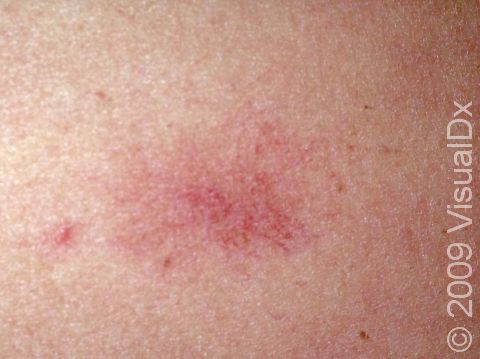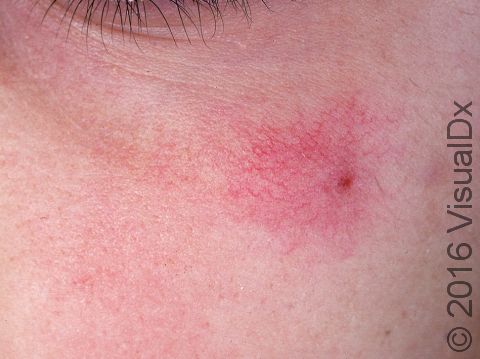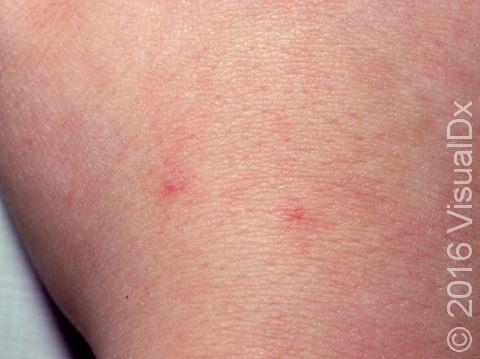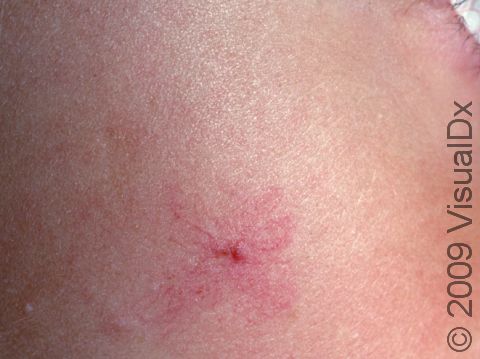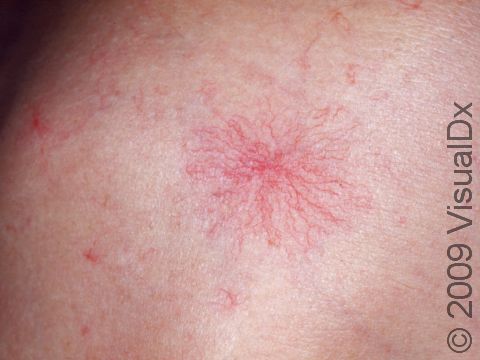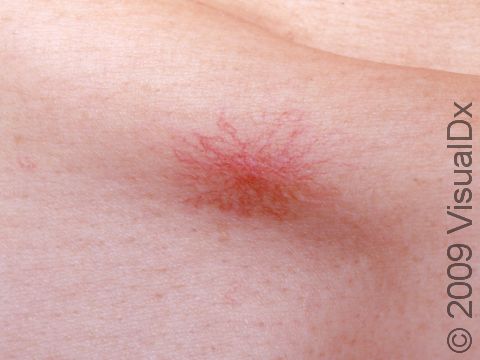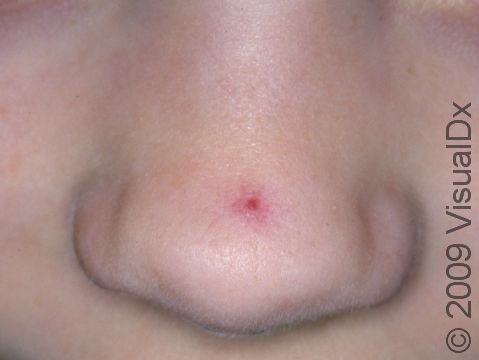Spider Angioma
A spider angioma is a small benign (noncancerous) area on the skin caused by tiny blood vessels near the skin’s surface. The blood vessels are so close to the skin’s surface that the angioma looks quite red; the vessels form a pattern that can look like a spider’s web, hence the name.
Who's At Risk?
Anyone can have a spider angioma. Many babies are born with them and then they go away as the child approaches 1–2 years old, and adults often get them later in life. They are also common in pregnant women and in people with liver disease. They are more obvious in lighter-skinned individuals.
Signs & Symptoms
Spider angiomas are most often seen on the face or trunk. They also may be seen on the hands, forearms, and ears. There may be one or several spider angiomas present. Each one is a small (1–10 mm) area of redness, which disappears with direct finger pressure but rapidly returns when the pressure is released. There is often a central red dot and small red lines radiating out from the center.
Self-Care Guidelines
No self-care treatment is necessary.
Treatments
- If the lesion is cosmetically bothersome, it can usually be removed with burning (electrocautery) or laser treatments.
- If you might have a liver problem, blood tests will be done.
Visit Urgency
- See your doctor if the area bleeds repeatedly or begins to grow in size or change in color.
- If you suddenly develop many lesions, tell your physician.
- If you have any sign or particular risk of liver disease (such as yellow skin color, swollen belly, or a history of heavy alcohol use) seek medical care.
References
Bolognia, Jean L., ed. Dermatology, pp.721, 1656, 2157. New York: Mosby, 2003.
Freedberg, Irwin M., ed. Fitzpatrick’s Dermatology in General Medicine. 6th ed. pp.1003, 1013-1014, 2502. New York: McGraw-Hill, 2003.
Last modified on August 16th, 2022 at 2:44 pm

Not sure what to look for?
Try our new Rash and Skin Condition Finder
